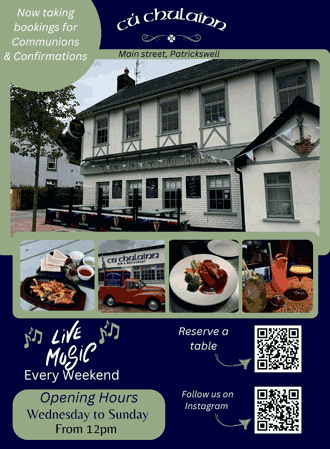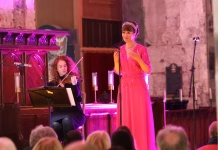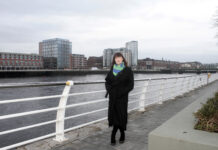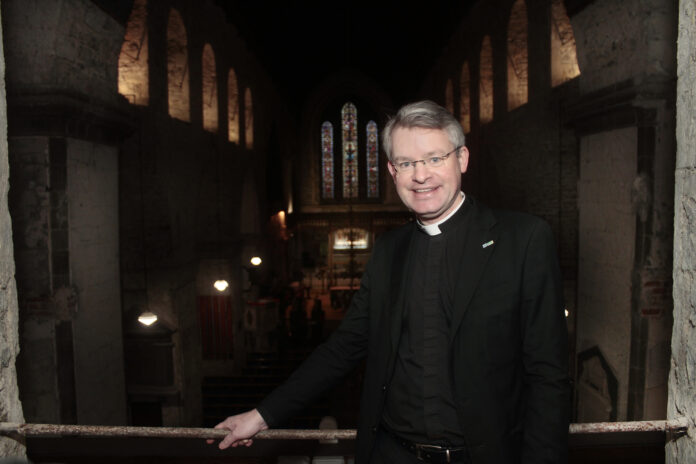
FOR many of us, the workplace consists of clocking into beige and airless offices that are cramped, gloomy, and totally bereft of character. Well, that’s the stereotype, at least.
Recently though, after a visit to one man’s resplendent and uplifting place of work, I knew I would never look at the water cooler in the Limerick Post’s headquarters in the same light again.
There could be no comparison between my daily sojourn to 97 Henry Street and the Dean Niall Sloane’s shepherding of God’s flock from St Mary’s Cathedral in the heart of the city.
And with not enough hours in the day for the young Dean of Limerick and Ardfert to tend to all his duties, news that he is running a few minutes late is almost welcomed. It gives me an opportunity to take in the exalted and hallowed surrounds of this historic building, for which I am grateful.
Its walls, steeped in antiquity, almost cry out their stories to me, and, as an inquisitive soul, leave me giddy at the notion of the information they stow. Of course, this most magnificent of sites is, first and foremost, a place of worship, so I take a quick moment to reflect and gather myself.
Caretaker and tourism officer Noreen Ellerker is on hand to give me a quick rundown of the cathedral’s history, which feeds my curiosity all the more. The piped choral music echoing around me adds to the still and solemn atmosphere of this holiest of houses, and fills me with a quieted sense of peace.
St Mary’s Cathedral, dating back to the mid-twelfth century, Noreen tells me, has survived invasions, the corroding passing of time, and the most tumultuous of Limerick downpours. Not even Éowyn, Ophelia, or Darwin could make an impression on this sacred plot, which was once home to the O’Brien Kings of Thomond and Limerick.
Not only that, I am impressed to learn, but St Mary’s Cathedral is considered the most important Irish medieval church building to survive intact and still continue to perform its original function. The Limerick site is also the best preserved church – built on a continental scale – before the Norman invasion of 1169.
With that, Dean Sloane appears, breathless and seeking atonement for his tardiness. If it wasn’t for his beaming smile and courteous welcome, he could have easily passed for Heathcliff, straight off the pages of Wuthering Heights, with his windblown hair.
‘There are worse offices, I suppose’
As he shakes the outside elements off, my childlike enthusiasm for this extraordinarily complex building, with elements from centuries ago, right up to the present, isn’t lost on Dean Sloane.
“There are worse offices, I suppose,” he suggests.
Niall, who grew up in Loch Gowna, County Cavan, still has a soft lilt in his accent from his humble Ulster beginnings. Himself, and his two brothers and sister, were raised in the local post office and shop, which his parents still have today.
The 43-year-old pastor’s formative years, along the River Erne on the Longford, Cavan, Leitrim border, saw him first interested in pursuing a career in hotel catering and management. But it was a conversation as a teenager with retired cleric Roy Jackson, father of the Archbishop of Dublin, that saw his life take a different direction.
“I never thought I would end up in the Mid West. I thought I might be in Shannon Catering College, not the cathedral, but then one thing lead to another. A talk with a retired priest sparked something else and I went to university, studied theology, started training, and then got ordained,” he tells me.
“Growing up, we were very involved in the post office and the shop, which were at the heart of the community, and my parents were very actively involved in community organisations and tidy towns. So, I was very much geared towards people and community, which is still very dear to me as well.”
Never a dull day
After Trinity College, Niall attended the Milltown Institute and the Church of Ireland Theological Institute in Dublin, before being ordained in 2005.
Before taking up his post at St Mary’s Cathedral, he served as curate assistant in Agherton Parish, and then as senior curate assistant in Taney Parish, Dundrum. He was also rector of Holy Trinity, Killiney, in the Diocese of Dublin. Giving back to the community is an ethos ingrained in the passionate clergyman from a very young age. This, he is keen to point out, is also the essence of his ministry in the cathedral.
Between family life and his pastoral duties, life is certainly hectic for Niall. Married to wife Karen and father to eight-year-old Evelyn, his days start with breakfast at home and then the obligatory school run.
After that, it is the important duty of tending to his flock.
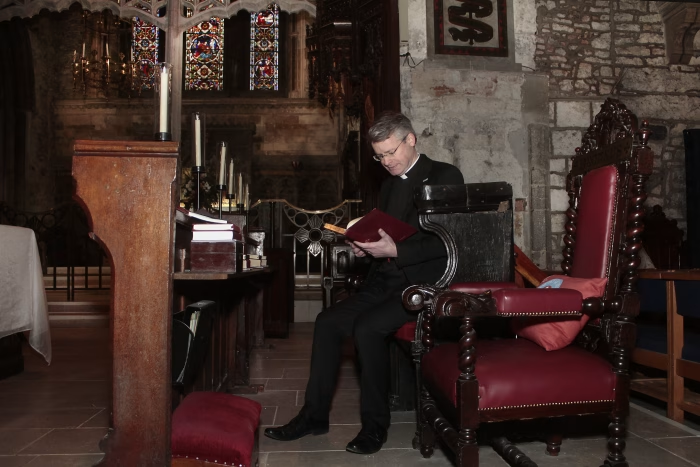
There’s a saying that a church is not a campus but a community, and pastors are not CEOs; they are shepherds. And no two days, tending to his herd’s spiritual needs, are the same, the rector of Limerick City Parish confesses.
“That’s one of the beauties, and sometimes the challenges and frustrations of the role. But look, you can never say it’s dull,” he says.
“My day could be filled with anything from the pastoral side of things, which is obviously a priority – visiting around the city. We cover a huge geographical area from Castleconnell to Kildimo and Newport to Bunratty. We have parishioners living in all those areas, so there could be house visits, and possibly nursing home visits.
“We are chaplain to the hospitals, the prison, nursing homes, schools, and by virtue of my office as dean, I’m involved in Villiers School as chairman of the board of governors. I’m also on the board of Castletroy College and chairman of the board of management at St Michael’s National School.”
History pouring from the walls
Running an operation like St Mary’s Cathedral is also a mini business in itself with staff, volunteers, tourism, and upkeep to be considered among Niall’s many other diocesan duties.
As we head into the inner sanctum of the Cathedral’s backroom offices and sacristy, I’m still a little overwhelmed by the history seeping from every corner.
“You must feel the history pouring out of these walls?” I ask.
“Sometimes more than I would like,” he admits as we make our way up the creaky backstairs.
As we take a seat in his age-old quarters, I suggest to Rev Sloane that perhaps his chosen career choice isn’t too far away from his earlier notions of hotel management, after all?
“There are similarities, I’m just serving my community in a different way,” he observes.
“Our doors are always open, and I suppose, symbolically, we have the west door, which is supposedly the oldest door in Limerick. And doors are for going out and coming in. We welcome in but we also see it as part of our mission and outreach to check that we’re not stuck in behind these walls – we get out there.
“The doors here are open, and if you haven’t seen this space, don’t let it go by. Life is short, so see what you can of what’s on your doorstep. We’re here and, symbolically, we have a light on the tower, and that’s shining onto the bridge to show there’s always a light here. There’s always a welcome for anybody who wants to come in and say hello,” he concludes.
I, for one, will certainly be back.


